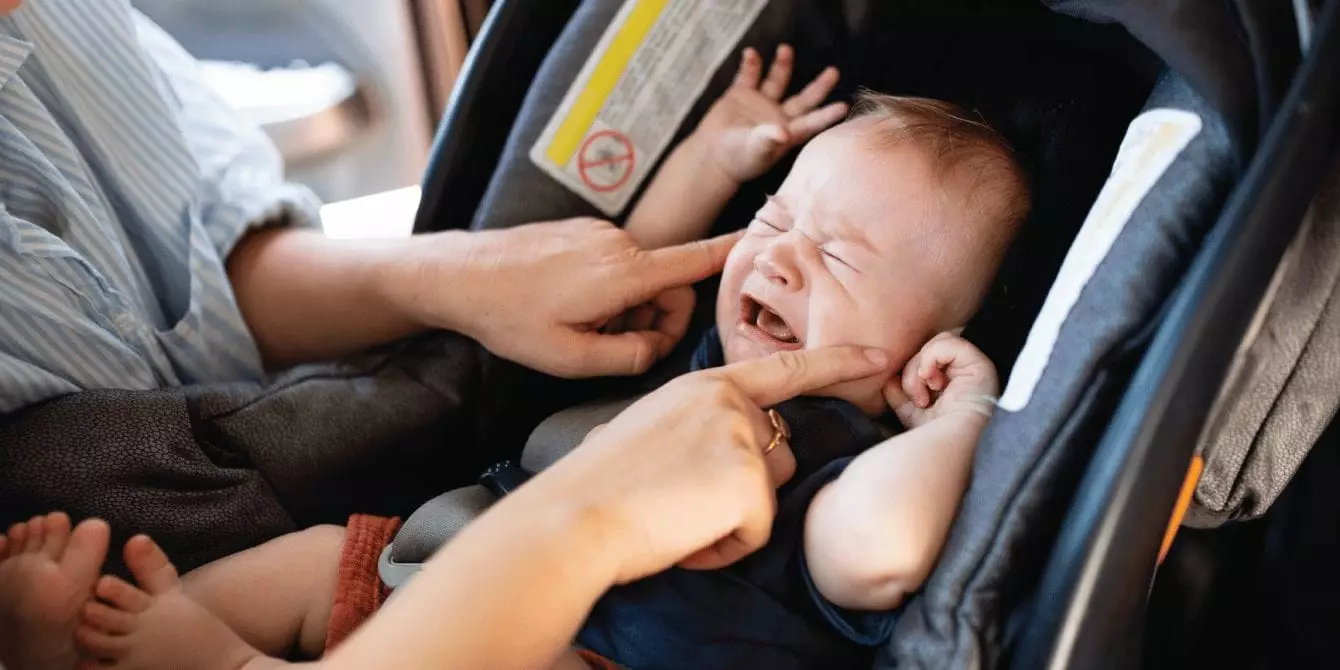Many parents face the daunting challenge of calming their infants during car journeys, often feeling overwhelmed by their child’s relentless crying. This distress stems from a complex blend of innate biological responses and unfamiliar environments. Babies cry in cars primarily because they can’t see their primary caregivers, leading to feelings of vulnerability and separation anxiety. This natural response, known as separation distress cry, is hardwired for survival, ensuring that caregivers are prompted to comfort and reassure their young ones. However, when confined in a car seat, these cries can escalate into persistent wailing, creating stress not only for the baby but also for anxious parents and distracted drivers.
The physiological and emotional toll of such crying is significant. Research indicates that continuous distress can lead to physical symptoms like vomiting and hoarseness, further complicating the parent-child dynamic during travel. From an evolutionary perspective, these cries are an urgent SOS, compelling caregivers to respond swiftly—yet, in a moving vehicle, immediate comfort becomes a logistical nightmare. This presents a paradox: the very safety mechanisms embedded in car seats can inadvertently cause discomfort that triggers the distress they aim to safeguard against, creating a cycle of agitation that feels endless.
Rethinking Car Seat Comfort and Preparation
One of the most effective strategies begins before departure: making the car seat as inviting as possible. The initial moments of buckling a baby into a seat are crucial, yet often overlooked. Sudden contact with straps and buckles can startle infants, reinforcing their dislike for the car seat. Innovative products like StrapAway, which tucks straps out of the way during loading, can ease this transition, reducing immediate discomfort. Parents who invest in such accessories discover smoother, less stressful transfers—especially for sleeping babies who might wake up upset when moved.
Preparation is key. Gradual habituation, as recommended by experienced parents, works wonders. Frequent, short practice drives where the baby is awake and engaged in positive activities can forge constructive associations with car rides. For example, sitting in the backseat together or engaging in gentle play while leaned against the seat allows the baby to relax with the environment. Adjusting the positioning of the car seat—such as lifting it slightly away from the back of the front seats—can minimize jarring vibrations and create a more stable, comfortable ride. Small tweaks like these can transform a harrowing experience into a tolerable or even pleasant one.
Temperature regulation and appropriate clothing are often underestimated factors influencing a child’s comfort. Instead of bulky jackets that hinder strap effectiveness and cause overheating, parents should opt for normal layers and reserve layers for when outside the car. Overheating in confined spaces can heighten discomfort, making crying more likely. Planning trips during times when babies are naturally inclined to sleep—such as nap times—can also lead to longer periods of calm. If a baby is already tired, they are more prone to sleep through the ride, decreasing distress and enabling parents to maintain focus on driving safely.
Using Sensory Strategies and Environmental Adjustments
Calming auditory stimuli, notably music, are backed by research and anecdotal evidence for their soothing effects. Playing soft, familiar lullabies or gentle melodies can extend periods of tranquility. Some parents take this further by singing along, creating a sense of security through their voice. The therapeutic power of music lies not only in distracting the infant but also in fostering a positive emotional connection, which can diminish anxiety linked to car rides.
Innovative devices like sound machines shaped like microphones, which emit human voice “shush” sounds, have garnered praise for their portability and calming capabilities. These tools replicate the comforting presence of a caregiver’s voice, easing babies into sleep or calmness during travel. When combined with other soothing techniques, such as a favorite stuffed animal or blanket, these sensory tools can significantly reduce crying episodes.
Furthermore, managing feeding routines to combat gas and reflux issues is vital. Car rides often exacerbate discomfort caused by post-meal bloating or acid reflux, as confined positioning prevents natural relief movements. Planning trips for an hour or so after feeding allows gas to dissipate naturally, while selecting natural remedies and consulting pediatricians can help manage reflux symptoms. Babysitting styles that accommodate these needs can make the difference between a peaceful journey and a prolonged ordeal.
The Reality of Growth and Patience
Finally, it’s essential for parents to recognize that babyhood is a temporary phase. Persistent crying during car rides often diminishes with time and patience. Many children outgrow their resistance to traveling within the first year, as they develop better motor control, understanding, and emotional resilience. Sharing experiences from seasoned parents reveals that, although initial struggles are intense, persistence finally pays off. The distress becomes a distant memory as children grow older and become accustomed to routine travel.
This understanding is vital for parents teetering on the brink of despair. Maintaining a positive outlook and employing incremental exposure can turn the experience of traveling with a crying baby into an opportunity for building resilience—both for the child and the caregiver. Over time, what once seemed unbearable becomes a manageable part of family life, opening doors to new adventures and closer family bonds. Patience, consistency, and a dash of creativity are the tools that transform chaos into calm on the road.

